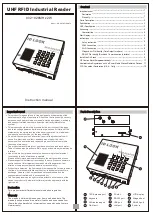
TL 1128 (TOP HOLES)
Issued August 2016
Revision No: 006
Printed in U.S.A.
Copyright 2016, Bayne Premium Lift Systems
Diverter Valve Information
15
Possible Problems
1. The most common cause of valve failure is dirty oil. If debris becomes lodged in the cartridge valves they will
malfunction. Recommended filtration level is between 15 and 25 microns. Many systems filter the oil on the return
side. This does not guarantee clean oil going into the system. It is important to ensure that the tank vent filtration
element is properly maintained as well. Very small contaminants may not cause the valve to stop functioning, but can
cause “stiction” in the cartridges between the body and the moving spool. This can cause improper operation. A slow
moving tipper is most likely the result of contamination in the flow regulator cartridge. A pulsating noise may be the
result of contamination in the differential pressure sensing valve causing it to stick. If any valve malfunctions, remove
and thoroughly clean the valve, being extremely careful not to score or abrade the “o” ring seals or moving parts of
the valve. Be sure that the spool moves freely in the valve body.
2. The flow regulator cartridges (FR1 and FR2) are designed to operate at a designated pressure of 80 psi. This means
that in order for the valve to function properly, a minimum of 80 psi is required from the supply line through the “IN”
port of the valve. This can present a problem on trucks with a dry valve pump system. Normally in the dry (off) mode
of the pump, a flow of approximately 2 gpm at 20 psi is required to circulate through the open center system of the
truck. This is for pump lubrication in the off mode. When the diverter valve is placed in the main pressure line of the
truck, a blockage occurs because of the differential pressure sensing valve needing 80 psi to initially open and allow
the flow regulators function. The path of the lubrication oil is therefore stopped because the valve does not open.
When the oil is blocked, the pump will rotate and cavitate in the lubricating oil, causing heat to build up over an
extended period of time, possibly leading to premature pump failure. To prevent this problem from occurring, a
“bleed line” circuit needs be installed on the truck to allow passage of the lubricating oil back to tank.
3. On front load residential truck applications, several considerations need to be noted. The Bayne hand valve is an
open center valve that allows for the lifter circuit to maintain flow through the hand valve and back to the diverter
valve when the lifter is not being operated. If flow is not maintained through the hand valve, the oil will constantly be
relieving over the lifter circuit relief valve (RV) in the diverter valve, which can cause an increase in operating
temperature. Certain front load box designs allow for the hand valve to be located on the arms of the truck which
keeps the hand valve in the lifter circuit at all times to maintain flow. Most problems occur with applications where the
hand valve is located on the box itself. In this situation, when the operator disconnects the hydraulic lines to the box,
a blocked condition occurs in the lifter circuit. To prevent this problem, the pump must be turned off prior to
disconnecting the box hydraulic lines. Once the lines have been disconnected from the box, it is necessary to
connect the two lines for the hand valve to each other to functionally complete the lifter circuit. It is recommended
that male and female quick disconnects be used opposite each other on the truck to provide an uninterrupted circuit.
Once the lines have been connected and the circuit continued, the pump could then be turned on to continue
operations.
Содержание Environmental Solutions BAYNE TL 1128
Страница 4: ...INTENTIONALLY LEFT BLANK TL 1128 TOP HOLES ...
Страница 54: ...INTENTIONALLY LEFT BLANK 50 TL 1128 TOP HOLES ...
















































